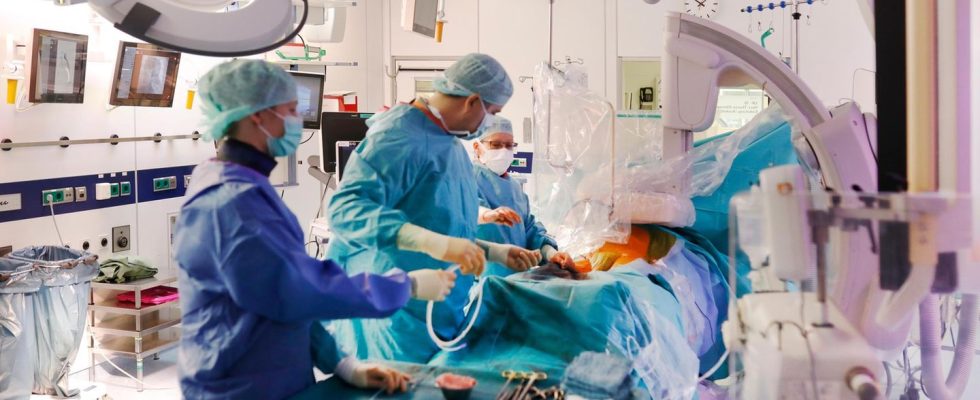Every year 4,000 Germans suffer an aortic dissection. Surgery is often required immediately. As in the case of Markus Kraft.
By Kathrin Schwarze-Reiter
A sterile lock opens to reveal the ultra-modern operating room, one of 19 rooms in the basement of the Regensburg University Hospital. It is brightly lit, monitors beep, a dozen people are buzzing around the center of the room: the operating table on which Markus Kraft* lies under a surgical drape. Today the 48-year-old is to be given years worth living here. After an acute aortic dissection – a tear in the inner layer of the main artery – two years ago, the large vessel has now massively expanded. The risk of this operation: The industrial mechanic could end up in a wheelchair afterwards.
Karin Pfister, head of the vascular surgery department, enters the room in a surgical gown and an X-ray apron, with a face mask, gloves and lead-glass glasses, which are intended to protect the eyes from X-rays. She asks for calm and concentration before the operation – a so-called team time-out. As with the safety check on the plane, the team goes through the most important points of the procedure and checks whether all the material is ready. Then vascular specialist Pfister punctures the artery in Markus Kraft’s groin with a needle and pushes a finger-thick snake-like piece of equipment into the main artery – it is a stent prosthesis that was made especially for him. It is intended to strengthen the aorta, which was torn lengthwise in Markus Kraft. Without the minimally invasive, endovascular procedure, he would probably not survive long.
The aorta is the largest artery in the 100,000 kilometers of blood vessels that run through our body. It arises from the left ventricle of the heart in the shape of a walking stick and distributes the blood to all organs down to the skin. But high blood pressure and calcification can weaken the aortic vessel walls to such an extent that they expand and tear. An unhealthy lifestyle is not always to blame, but also a congenital, inherited weak connective tissue. As with Markus Kraft: He has lived quite healthily and sportily his entire life and is slim. But the suffering runs in the family – his father and his brother both suffered a tear in the descending aorta, a so-called type B aortic dissection.

